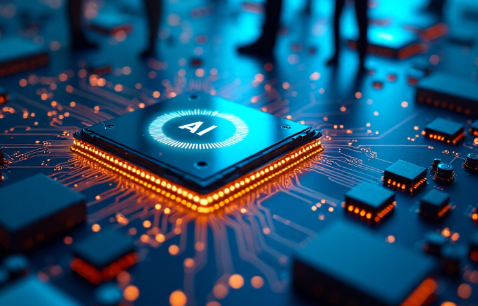Next Gen Semiconductors for AI Workloads
Next-generation semiconductors are essential to meet the escalating demands of artificial intelligence workloads. By utilizing advanced materials such as graphene and silicon carbide, these chips promise significant improvements in processing power and energy efficiency. Specialized architectures facilitate efficient parallel computations, paving the way for rapid data processing. As the industry focuses on miniaturization and adaptable designs, the implications for AI technology are profound and warrant further exploration.
The Evolution of Semiconductor Technology
As the demand for advanced computing capabilities escalates, the evolution of semiconductor technology has become a crucial driver in the development of artificial intelligence (AI) workloads.
Transistor miniaturization enables increased processing power while reducing energy consumption. Alongside material innovations, such as the use of graphene and silicon carbide, these advancements facilitate enhanced efficiency and performance, crucial for meeting the burgeoning needs of AI applications.
Read Also: technical document identification numbers
Enhancing AI Performance With Specialized Chips
While traditional processors have played a significant role in computing, the unique demands of AI workloads necessitate the development of specialized chips designed for enhanced performance.
These chips leverage innovative chip architecture to facilitate performance optimization, enabling faster data processing and efficient parallel computations.
As a result, they unlock unprecedented capabilities in AI applications, empowering researchers and developers to explore new frontiers in artificial intelligence.
Future Trends in Semiconductor Development for AI
Emerging trends in semiconductor development for AI indicate a shift towards more adaptable and efficient architectures, driven by the increasing complexity of artificial intelligence tasks.
Quantum computing promises exponential speed-ups, while neuromorphic design mimics neural networks, enhancing processing efficiency.
These innovations are paving the way for next-generation chips that will redefine capabilities, providing unprecedented flexibility and performance for diverse AI applications.
Conclusion
In conclusion, next-generation semiconductors stand at the forefront of a technological renaissance, akin to the beating heart of artificial intelligence innovation. By harnessing advanced materials and specialized architectures, these chips not only enhance processing power but also reduce energy consumption, paving the way for unprecedented computational capabilities. As the landscape of semiconductor technology continues to evolve, it promises to unlock new frontiers in AI, ultimately shaping a future where intelligent systems can thrive and transform industries.




